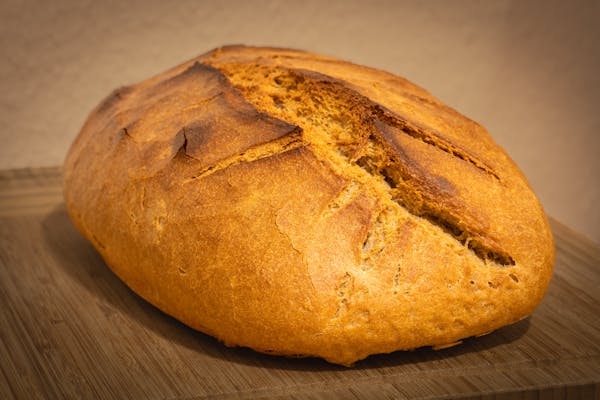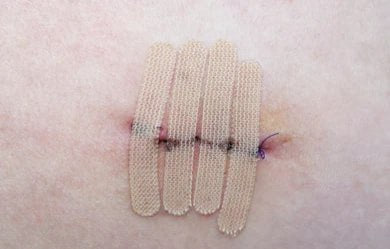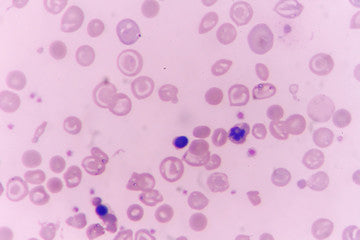How to Defrost Bread: A Simple Guide

Related products
Frozen bread, a staple in many households due to its prolonged shelf life, often poses the challenge of defrosting. Proper thawing techniques are essential, as they impact not just taste and texture but also nutritional value.
According to Dr. Mary Ellen Camire, Ph.D., "A common misconception exists that freezing degrades the nutrients found in bread; however, this isn't necessarily true." She emphasizes that when done correctly - through utilizing appropriate methods of thawing – preserved nutrients remain relatively unaffected.
Accurate defrost strategies can retain freshly baked loaves' beautifully crisp crust and soft interior. Several evidence-based methodologies exist for those seeking efficient solutions during their morning rush or dinner preparations without compromising quality or health benefits. Basics include using modern conveniences such as microwaves or ovens, while others prefer more traditional ways, such as simply leaving bread out at room temperature until thoroughly warmed.
Let us delve into each methodology, providing practical explanations that ensure optimum results every time a loaf needs reviving from frosty conditions.
Room Temperature Method
When it comes to the Room-Temperature Method, there are two different ways of proceeding depending on whether one intends to thaw a whole loaf or just slices of bread.
For Whole Loaves
The process initially involves extricating the frozen item from its chilly confines. Next, any plastic wrapping or aluminum foil needs to be removed, as they might promote unwanted condensation, affecting overall bread quality.
Subsequently, arrange this frosty artifact onto a plate or cutting board—the choice depends upon personal preference, but both serve the purpose of catching moisture inevitably released during thawing, thus maintaining integrity and avoiding sogginess.
A clean towel serves multiple roles. Not only does it absorb excess dampness, curtailing the soggy effect, but it also fosters steady circulation of warm air, accelerating defrost time while preventing any airborne contaminants from reaching the food surface, which means healthier consumption every time.
Lastly, allow these steps to culminate over the next few hours (2-4 approximately). Patience bears fruit, leading to perfectly warm yet still fresh-tasting results that prove worth the wait.
For Slices:
Begin removing the desired number of slices stored inside the freezer, then patiently pry apart using utensils like butter knives, ensuring none break into pieces due to hardness. Remember to aim to achieve an intact slice; hence, gentle, delicate actions are needed throughout the procedure. After acquiring individual segments, lay them in layer formation across the chosen dish such that no overlap guarantees uniform exposure to ambient temperatures, resulting in an even distribution of heat and facilitating efficient defrost. Now, the final step is merely waiting 20-30 minutes before mouthwateringly soft, ready-to-eat rebirth takes place.
Oven Method

In the Oven Method, the steps differ slightly for Whole Loaves and Slices.
For Whole Loaves:
Start by priming your oven at 350°F (175°C) temperature. A preheated oven helps ensure a steady environment, aiding an even defrost process without potential heat shock to a chilled loaf, leading to unwanted textural changes.
The next phase requires freeing your frozen prized loaf out of its icy dwelling—the freezer. Post liberation, any plastic wrap or foil must be cautiously removed, as these materials risk melting under high temperatures, potentially ruining subsequent stages and affecting the overall edibility factor.
The following suit is inserted into a centralized stage setting: Place this cold entrant directly onto the oven rack/ baking sheet, whichever is preferred. Both work equally efficiently in evenly distributing pervasive warmth. It's additionally beneficial to use convection-type ovens since they offer consistent heat transfer rates, thereby promoting the desired thawing effect within just a few minutes!
Next comes the tryst with time; the heating period typically lasts between 15-20 minutes depending on variables such as density, size, etc. However, the general thumb rule remains to aim for a soft, fully thawed end product.
For Slices,
A similar initial step applies here, too, i.e., warming up that conventional/modern gadget known as an 'oven' again sets the signature universal standard of 350°F(175 °C)
Thereupon, carefully slide those ice-struck slices from chilly vaults unto freedom! Once achieved, neatly arrange them all across flat surfaces like baking sheets, ensuring a single-layered layout so each one gets equal attention, thus evading partiality whatsoever. You can't have some more heated than others, right?
Finally, it allows lesser duration compared to its whole counterparts. It merely needs a trifling span lasting only around five to ten minutes, partly owing to its thinner structure. Hence, quicker completion now awaits the opportunity to savor a wonderfully reinvigorated bread magically transformed back to its original form and retain innate freshness despite having undergone a freeze-thaw cycle!
Microwave Method

Starting with retrieval, gently separate frost-ridden victims from their freezer habitat onto the kitchen counter. If you detect any stubborn adherence between these chilly layers due to icing, feel free to employ a butter knife as a mediator, albeit with a soft touch, which is key here to avoid disrupting the integrity of the slice.
Once the individual pieces are sorted out, begin setting up the stage: Arrange each one neatly across the microwave-safe plate. Make sure the formation follows a single-layer structure, promoting equal distribution of heat and eventually leading to an even thaw process.
An interesting yet equally significant technique involves covering an assortment of paper towels. Wonder why? They help absorb excessive moisture released during the warming phase, hence preventing sogginess and maintaining crispness intact. Besides, acting as a barrier against sudden spurts of steam might cause uneven heating issues.
Finally, we arrived at the heart of the whole operation—microwaving! Now, the rules are a bit different here compared to conventional oven or ambient temperature methods. Microwaving typically demands low power settings ranging anywhere from 30-50% duration merely lasting about fifteen-thirty seconds, followed by regular check actions ensuring the target is achieved but not surpassed, i.e., the goal remains attaining perfectly warm, completely thawed slices rather than overheated rubbery ones.
Remember, patience and virtue play a huge role in the successful culmination of culinary experiments. So sit back and relax while magic unfolds, and voila, freshly baked, served hot, right home comforts!
Tips For Best Result
When endeavoring to achieve the best results while defrosting bread, certain tips and techniques merit consideration:
One vital tip pertains to microwave usage. High heat settings might sound appealing for their time-saving promise; however, they lead only to disappointment, turning bread chewy or rubbery in texture. Adopt the "low and slow" axioms, where a moderate temperature setting over a slightly longer period tends to yield far superior outcomes.
Second on the list concerns the moisture check post-thaw process. Often, after thawing, especially in humid environments, dampness lingers, causing a soggy effect, which hampers the overall taste appeal. The solution lies in letting it sit uncovered for a few minutes at room temperature, allowing any residual wetness to evaporate naturally, returning to its original crispiness, much like freshly baked loaves to have
Yet another noteworthy suggestion involves refreshing stale-seeming bread sometimes despite taking all necessary precautions during defrosting. They still may appear a bit off, which is not quite their solution. A quick oven visit Here's how: preheat oven to 350°F (175°C), then place disheartened loaf/slice inside. Let bake for about five to minutes. Spell magic begins to unfurl, transforming them back into their former glory, boasting the same allure as before. This proves that a little extra effort, indeed, goes a long way, particularly whilst handling food so close to heart - Bread!
Summary
Defrosting bread entails strategically thawing it to retain taste, texture, and nutritional value. Three methods serve this purpose well - Room Temperature Thaw, Oven Method, and Microwave Technique – each working in its unique way depending on whether defrosting a whole loaf or slices. It involves the unwrapping of the frozen product followed by an appropriate amount of waiting time for warming up using room temperature, oven heating, or microwave techniques. Key precautions like avoiding high heat settings in microwaves prevent chewy outcomes, while post-thaw moisture checks ensure desirable crispness is attained.
Frequently Asked Questions
How can you defrost bread quickly?
Quick defrosting of bread becomes feasible with a microwave set on the low power setting for about 15-30 seconds, checked and repeated if required until thawed but not hot or rubbery.
How do you defrost frozen bread dough quickly?
Quickly defrosting frozen bread dough involves placing it in an oven-safe dish and covering it with plastic wrap loosely enough to let it rise as desired while preventing surface drying under ambient room temperature conditions. Depending upon the dough size, this process typically takes several hours.
How do you heat frozen bread?
Heating up frozen bread generally requires placing individual slices or whole loaves inside preheated ovens at around 350 degrees Fahrenheit (175 Celsius) after careful unwrapping from any freezer packaging; reheating continues until they soften completely, usually lasting for about 10-20 minutes, depending on thickness/size.
Can you eat frozen bread without defrosting?
Most people prefer enjoying thawed-out versions because freezing tends to firm up bread texture, making them a little tough to consume directly unless toasted first using appliances like toaster ovens, giving that desirable crispy edge paired with soft inner crumb just perfect alongside spreads/jams/butter, etc.
What is the best way to freeze and thaw bread?
Consider slicing fresh loaves beforehand, then arranging them into single layers sandwiched between wax paper prior to wrapping heavy-duty aluminum foil, followed by sealing them inside ziptop bags, eliminating air spaces before finally storing them within the refrigerator's coldest section. A good rule of thumb is to avoid keeping more than a month, which reduces the chances of frostbite. Starting proper initial storage goes a long way, ensuring successful results once you embark on a journey of reviving these cold treasures back into warm morsels.
How to revive frozen bread?
Reviving old yeast-risen buddies, start choosing a preferred method among three popular ones: Room-Temperature Thaw, Oven, and Microwave technique. Upon selecting, apply the respective series of steps mentioned earlier, and patiently wait for the process to culminate, revealing newly formed non-frozen entities ready to serve immediately! Remember, practice makes man/woman perfect, so keep experimenting until the right consistency is achieved every time!









 Rated Excellent by 26,523+ Reviews
Rated Excellent by 26,523+ Reviews